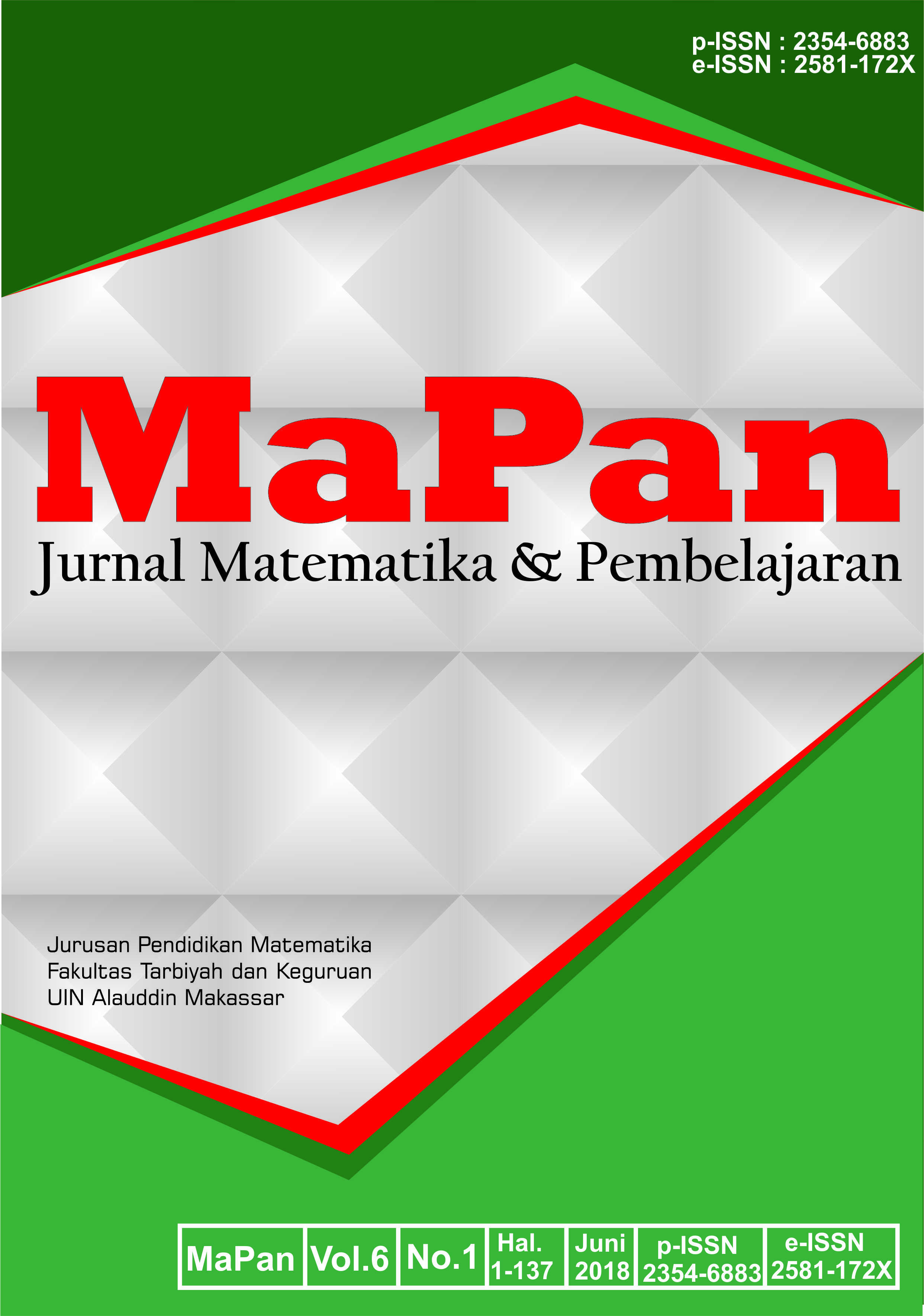TEACHING AND LEARNING MATHEMATICS THROUGH WEB-BASED RESOURCE: AN INTERACTIVE APPROACH
Abstract
Abstract:
The aim of this study is to investigate the effectiveness of teaching and learning process using web-based resource as an interactive approach in learning mathematics. Research method used in this study is content analysis. The web-based resource in this study is interactive mathematics website. Based on this resource, teaching and learning mathematics is divided into three steps, first, teaching and learning to give student’s understanding on mathematics concepts and notation; second, teaching and learning interactive applet; and Student’s independent practices. After teaching and learning, sixty-nine students were given a feedback about teaching and learning mathematics through web-based resource enrolled in linear algebra course. The 12 questionnaires by (Hsu, 2017) ware used as the instrument to collect data on participant’s usage of web-based resource. Data analysis was conducted descriptively. The results of this study showed that there are positive feedback on students’ satisfaction and learning interest when using a web-based resource. Also, the results showed web-based resource could help students’ learning mathematics independently. Students can repeat and relearn the material that has been delivered anywhere and anytime.
Abstrak:
Tujuan dari penelitian ini adalah untuk mengetahui efektifitas proses pembelajaran menggunakan bahan berbasis web sebagai pendekatan interaktif dalam belajar matematika. Metode penelitian yang digunakan adalah analisis konten. Sumber berbasis web dalam penelitian ini adalah website matematika interaktif. Berdasarkan sumber pembelajaran ini, pembelajaran matematika dibagi kedalam tiga langkah, yaitu pertama, pembelajaran untuk memberikan pemahaman siswa terhadap konsep dan notasi matematika; kedua, pembelajaran interaktif dengan applet; dan ketiga, latihan mandiri siswa. Setelah pembelajaran, 69 siswa yang mengikuti perkuliahan aljabar linear memberikan respon tentang pembelajaran matematika melalui sumber berbasis web. Instrumen yang digunakan adalah 12 kuesioner yang dikembangkan (Hsu, 2017). Hasil memperlihatkan bahwa terdapat respons positif dalam kepuasan dan minat belajar siswa ketika menggunakan sumber berbasis web. Hasil juga memperlihatkan bahwa sumber berbasis web dapat membantu siswa belajar matematika secara mandiri. Siswa dapat mengulang dan mempelajari kembali materi yang telah disampaikan kapan saja dan dimana saja.Downloads
References
Ahmad, S., Muneebulla, K. K., Ahmad, T. C., Approach, K. K., & Students, B. E. (2017). Approach of B. Ed. Students towards use of ICT and web resources: A survey of teacher training colleges of Bandipora District-J & K (India), 7 (1), 59-84.
Cardoso, A. et al. (2016). Internet-based resources to support teaching of modelling, simulation and control of physiological systems in biomedical engineering courses. IFAC-Papers Online, 46. https://doi.org/10.1016/j.ifacol.2016.07.199.
Chakraborty, S., Kanthamani, M., & Chen, J., & Subramanian, L. (2012). Symposium on computing for development. Retrieved October 8, 2017, from http://cs.nyu.edu/~sunandan/eduweb.pdf.
Combes, B., & Valli, R. (2007). Learning objects: Applications, implications, & future directions. (K. H. & A. Koohang, Ed.). Santa Rosa: CA: Informing Science Press.
Hadjerrouit, S. (2010). Developing web-based learning resources in school education: A user-centered approach. E-Learning and Learning Objects, 6.
Hartig, O., & Zhao, J. (2009). Using web data provenance for quality assessment. Proceedings of the 1st Int. Workshop on the Role of Semantic Web in Provenance Management (SWPM) at the International Semantic Web Conference (ISWC).
Hsu, L. (2017). Enhancing college students’ satisfaction and learning interest when the teacher uses a web-based platform while teaching. American Journal of Educational Research, 5 (1), 18–24.
Kay, R., Knaack, L., & Petrarca, D. (2009). Exploring teachers perceptions of web-based learning tools. Interdisciplinary Journal of E-Learning and Learning Objects, 5, 1–4.
Lai, L. S. L., & To, W. (2014). Content analysis of social media: A grounded theory approach. Electronic Commerce Research, 16 (2), 138–152.
Lakonpol, T., Ruangsuwan, C., & Terdtoon, P. (2015). Development of web-based learning environment model to enhance cognitive skills for undergraduate students in the field of electrical engineering. Educational Research and Reviews, 10 (21), 2806–2813. https://doi.org/10.5897/ERR2015.2470.
Loong, E. Y. K. (2001). Web mathematics anyone? International Education Journal, 2 (4), 216–222.
Mugan, P. (2008). Effect of intensively using web-based resources on the performance and attitude of High School Biology Students. https://doi.org/10.1.1.592.826&rep=rep1&type=pdf.
Sheard, J., P., Stema, M., & & Markham, S. (2000). What do students value?
Simon, E. (2015). Teaching with web-based resources. Retrieved October 8, 2017, from https://www.edutopia.org/blog/teaching-with-web-based-resources-edwige-simon.
Su, B., Bonk, C. J., Magjuka, R. J., & Liu, X., & Lee, S. (2005). The importance of interaction in web-based education: a program-level case study of online mba courses. Journal of Interactive Online Learning, 4 (1), 1–19.
Zawacki-Richter, O., Bozkurt, A., Alturki, U., & Aldraiweesh, A. (2018). What research says about MOOCs – An explorative content analysis. International Review Of Research In Open And Distributed Learning, 19 (1). https://doi.org/http://dx.doi.org/10.19173/irrodl.v19i1.3356.
Copyright (c) 2018 Hendra Kartika

This work is licensed under a Creative Commons Attribution 4.0 International License.


